Did you know that the average camper spends about a third of their trip inside their tent?
That’s right – your tent isn’t just a place to crash. It’s your home away from home in the great outdoors. And let me tell you, choosing the right one can make or break your camping experience.
Learning how to choose the camping tent that’s right for you is like finding the perfect dance partner. It’s all about matching your style, your needs, and yes, even your quirks.
I learned this lesson the hard way on a backpacking trip in the Lake District.
Picture this: me, huddled in a flimsy two-season tent while an unexpected storm raged outside. Let’s just say it, the peaceful night under the stars I had imagined! But hey, every cloud has a silver lining, and that soggy experience taught me the importance of choosing the right tent.
That’s why I’ve put together this ultimate tent selection guide. Whether you’re a seasoned backpacker or a family looking for the perfect car camping setup, I’ve got you covered.
We’ll break down everything you need to know about camping shelter options, from size and seasonality to weight and features. By the end of this guide, you’ll be ready to find your perfect outdoor home.
So, let’s dive in and get you set up for your best camping trip yet!
Table of Contents
Size Up Your Space: Choose the Right Tent Capacity
Weather the Storm: Pick Your Perfect Seasonal Shelter
Lighten Your Load: Balance Weight and Comfort
Pitch with Ease: Master Quick and Simple Setup
Built to Last: Invest in Durable Materials
Comfort is Key: Unlock Essential Tent Features
Smart Spending: Maximise Your Tent Budget
Tent Trivia: Mind-Blowing Facts That’ll Make You a Campsite Genius
Size Up Your Space: Choose the Right Tent Capacity
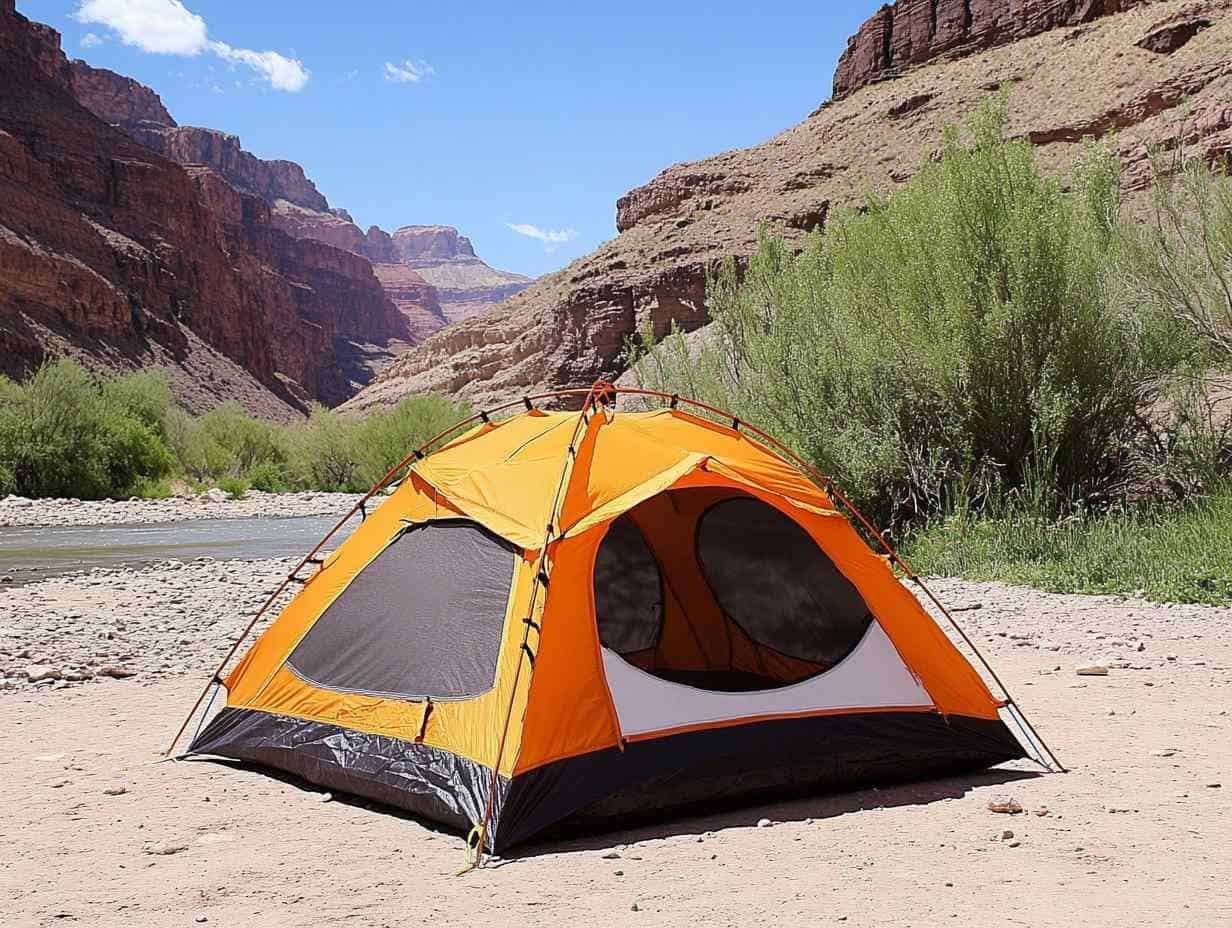
Alright, let’s talk tent capacity.
When you’re figuring out your tent size, think about more than just the number of people you’re cramming in there. Consider your gear, your comfort level, and hey, even your tendency to flail about in your sleep.
Remember, a tent’s sleeping area and living space are like a puzzle. You want all the pieces to fit without anyone getting an elbow in their face.
You know those little stick figures on tent descriptions? Well, they’re a bit…optimistic. When it comes to tent capacity ratings, think of them as a game of sardines rather than a spacious slumber party.
Here’s my golden rule: always size up by one person. Trust me, you’ll appreciate the extra space for gear, midnight stretches, or just not feeling like you’re sharing a sleeping bag with your tentmate.
For example, if you’re a couple camping with a dog (because let’s face it, Fido deserves adventures too), go for a 3-person tent.
But remember, bigger isn’t always better, especially if you’re backpacking. There’s a fine balance between comfort and carrying capacity. A 6-person palace might sound great until you’re lugging it up a mountain!
For car camping, though? Go wild! Family camping tents these days are like portable condos. I once saw a tent with separate “rooms” and a screened “porch”. Fancy stuff!
Here’s a quick breakdown:
- Solo camper or minimalist couple: 2-person tent
- Couple with gear or small dog: 3-person tent
- Family of four: 6-person tent
Remember, these are just guidelines. Your perfect size depends on your camping style, gear, and how much you like your tentmates!
Weather the Storm: Pick Your Perfect Seasonal Shelter
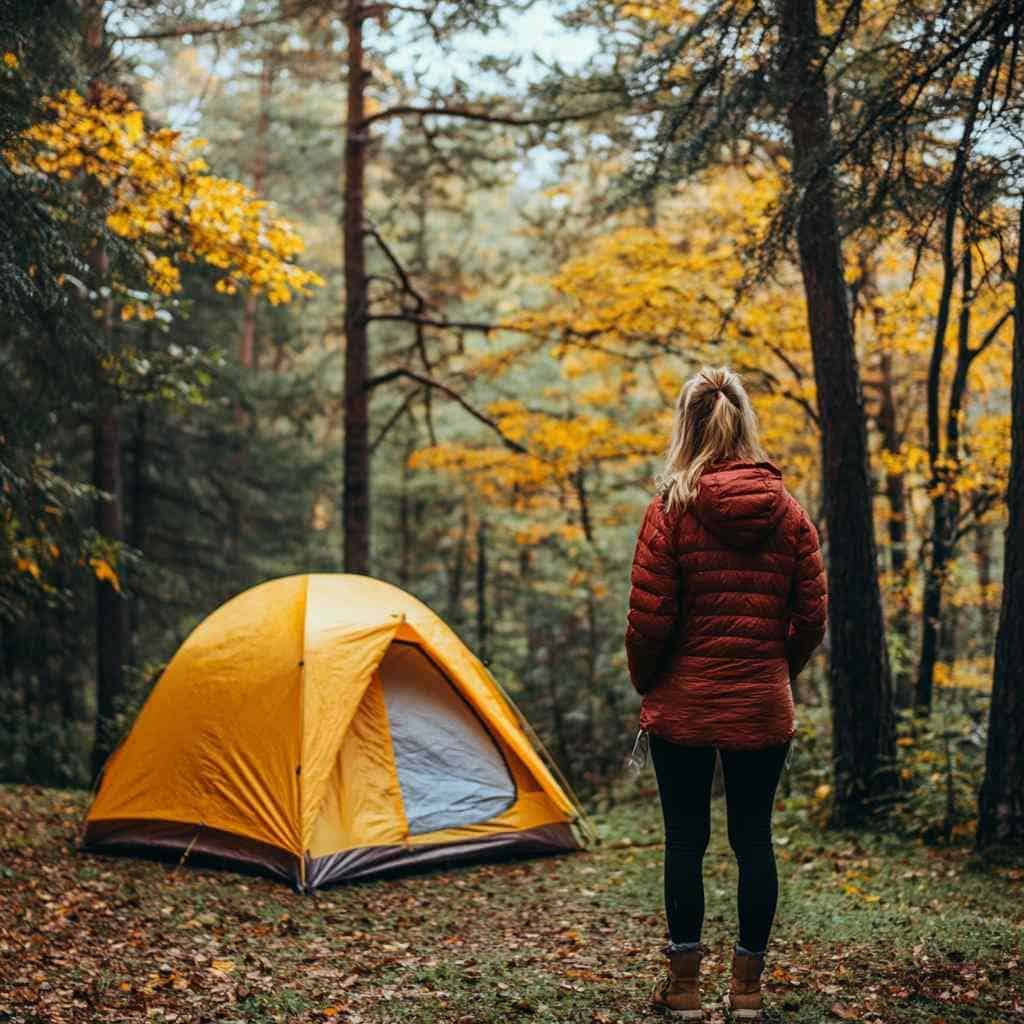
Let’s talk about the weather, because Mother Nature doesn’t always play nice. When it comes to tent seasonal ratings, it’s not just about the number of seasons you’ll be camping, but the conditions you might face.
Choosing a tent that can handle various weather conditions is like picking a reliable friend. You want one that’s got your back whether it’s sunny, rainy, or blowing a gale.
A quality tent isn’t just about staying dry – it’s about staying comfortable and safe no matter what Mother Nature throws your way.
Here’s the breakdown:
- 3-season tents: Your all-rounder. Good for spring, summer, and fall. They can handle rain and light snow, but aren’t built for harsh winter conditions.
- 4-season tents: The tanks of the tent world. These are designed for winter camping or high-altitude adventures. They’re stronger, heavier, and can withstand snow loading.
Now, let’s chat about weather resistance features. A good rainfly is your first line of defence against the elements. Look for one that covers the entire tent, not just the top. Vestibules are like little mudrooms for your tent – great for storing wet gear without bringing the mess inside.
Ventilation is key too, especially for preventing condensation. Look for mesh panels and adjustable vents. Trust me, waking up to a shower of condensation isn’t a fun way to start your day!
I learned the importance of weather-appropriate tents the hard way.
Picture this: camping in the Sahara desert (I crossed the Sahara in 1991), thinking, “It’s hot, I’ll just bring a mesh tent for ventilation!” Cut to me, at 3:00am, being sandblasted by an unexpected windstorm. Not my finest moment!
Remember, it’s always better to be overprepared. A 3-season tent with good weatherproofing will see you through most conditions.
But if you’re planning on winter camping or high-altitude adventures, invest in a proper 4-season tent. Your warm, dry, future self will thank you!
Lighten Your Load: Balance Weight and Comfort
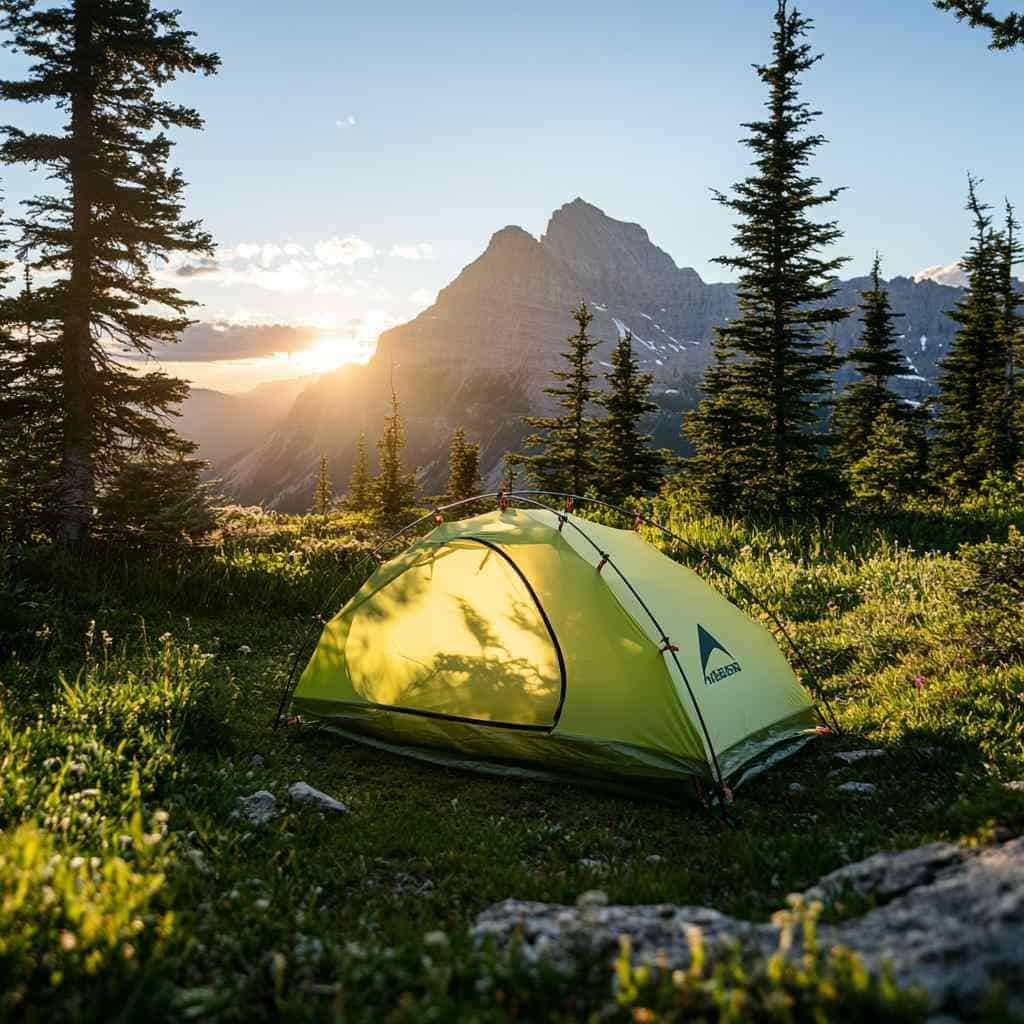
Alright, fellow adventurers, let’s talk about one of the most crucial factors in choosing a tent: weight.
Because let’s face it, that ultralight tent might seem like a great idea in the store, but halfway up a mountain? You’ll be grateful for every ounce you’ve shaved off.
When it comes to tent weight considerations, your camping style is key. Are you a car camper who only needs to move your tent from the trunk to the campsite? Or are you a backpacker counting every gram?
For car camping, weight isn’t as crucial. You can go for that palatial family tent with all the bells and whistles. I once saw a tent that was almost a house. It had room dividers and enough pockets to fit a lot of clothes.
But for backpacking?
That’s where things get interesting. Backpacking tent weight limits are a hot topic among hikers.
Generally, you want to aim for about 2 to 2.5 pounds per person (~1kg). So for a two-person backpacking tent, shoot for five pounds (2.26kg) or less.
Here’s a personal tip: if you’re backpacking with a mate, split the tent components. One carries the poles and stakes; the other takes the canopy and rainfly.
It’s a great way to distribute the weight and ensure you both make it to camp still on speaking terms!
Now, let’s talk about materials.
Most modern tents use nylon or polyester for the canopy and rainfly. These synthetic materials are lightweight and quick-drying. Tent pole technology has come a long way, too.
Aluminium poles are the sweet spot between durability and weight, while carbon fibre is super light but can be pricey.
Remember, ultralight doesn’t always mean better. I learned this the hard way when my ultralight tent nearly turned into a kite during a windy night in Wales. Sometimes, a little extra weight means better stability and durability.
The key is to find the right balance for your needs. And hey, if you’re struggling with the weight, maybe it’s time to leave that camp kitchen sink at home, eh?
Pitch with Ease: Master Quick and Simple Setup
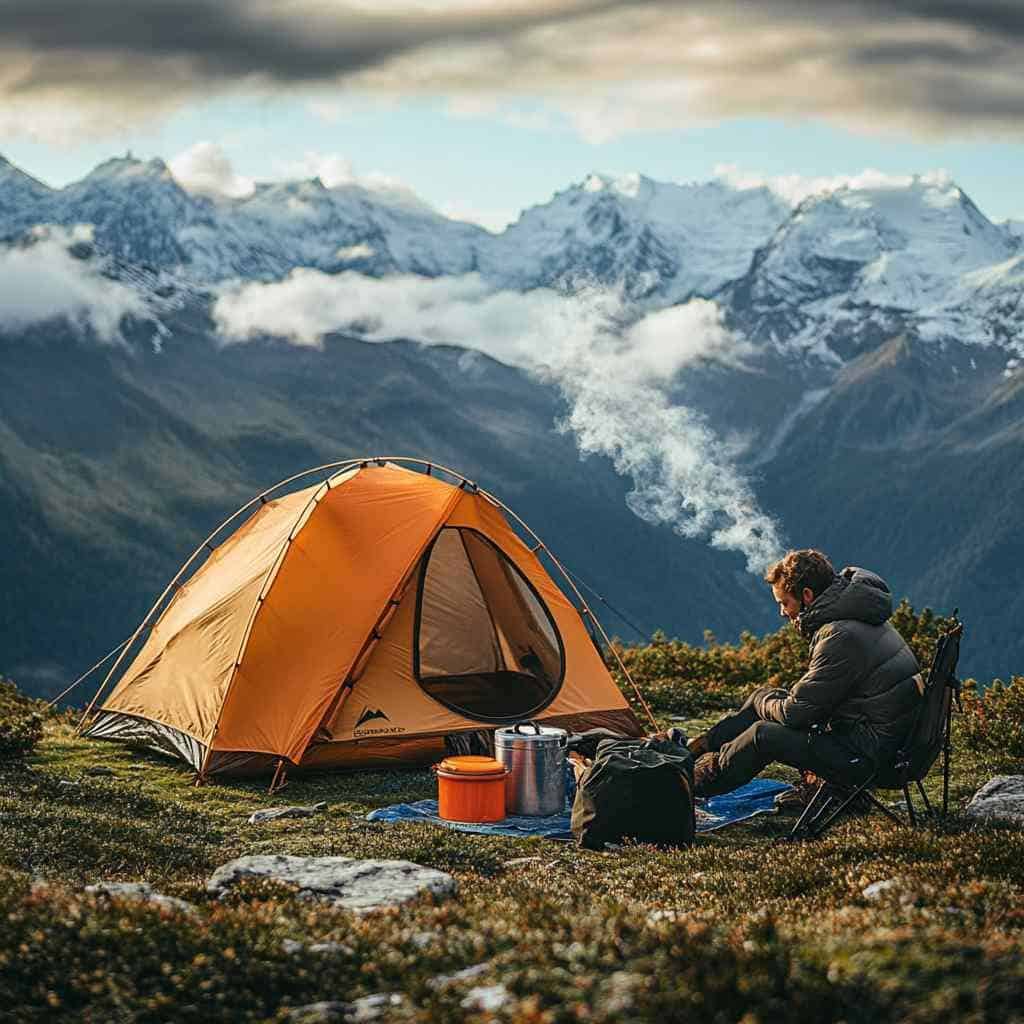
Picture this: you’ve just arrived at your campsite after a long day of hiking. The sun is setting, your stomach is growling, and all you want to do is pitch your tent and relax.
This, my friends, is when you’ll really appreciate an easy-setup camping tent.
Let’s break down some common tent designs:
- Dome tents: The old reliable. Usually pretty straightforward to set up and good all-rounders.
- Cabin tents: Great for family camping. More headroom, but can be trickier to pitch.
- Tunnel tents: Spacious and good in wind, but usually require more guy lines.
Now, let’s talk about the great debate: freestanding vs non-freestanding tents. Freestanding tents can stand up on their own without stakes.
They’re great for rocky ground or platforms. Non-freestanding tents need to be staked out. They’re often lighter but can be trickier to set up.
Here’s a pro tip: whatever tent you choose, practice setting it up at home first. Trust me, you don’t want your first attempt to be in the dark, in the rain, with mosquitoes the size of small birds circling your head. Not that I’m speaking from experience or anything…
I remember my first time setting up a non-freestanding ultralight tent. It was like trying to solve a Rubik’s cube while blindfolded.
There may have been some colourful language involved. But after a few practice runs? I could set that baby up in my sleep.
Now, let me introduce you to a game-changer in the world of tent setup: colour-coded poles. These little marvels of engineering are like a ‘paint by numbers’ for your tent.
No more puzzling over which pole goes where – just match the colours and voila! You’ll have your tent up faster than you can say ‘where’s the marshmallows?
And hey, if you’re camping with kids, get them involved in the setup. It’s a great way to teach them some camping skills and tire them out before bedtime. Win-win!
Remember, the goal is to spend more time enjoying the outdoors and less time wrestling with tent poles.
So choose a tent that won’t turn your setup into an episode of a camping blooper reel. Unless that’s your thing, in which case, carry on!
Built to Last: Invest in Durable Materials
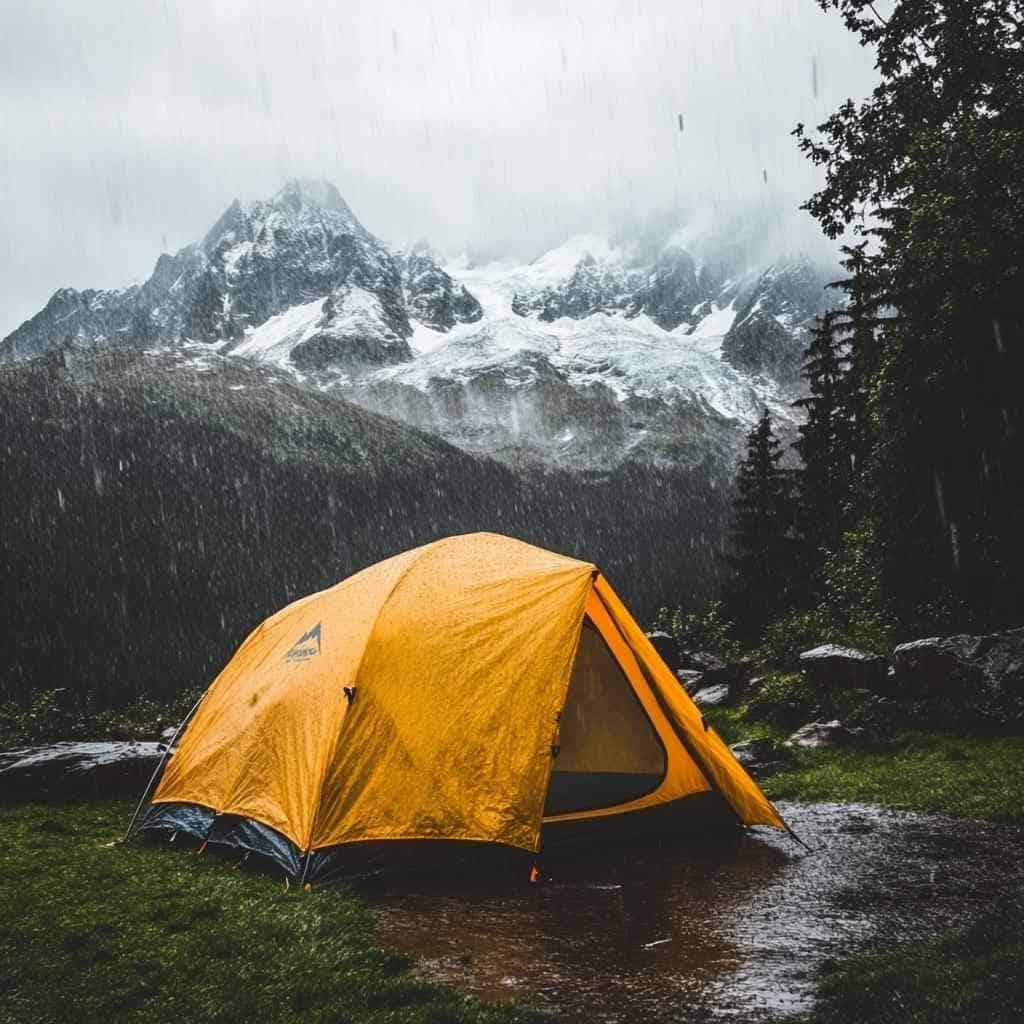
Alright, campers, let’s get down to the nitty-gritty of tent materials. Because when you’re out in the wild, your tent is all that stands between you and the elements. You want it to be tough, like Chuck Norris in fabric form.
Let’s start with the tent material comparison:
- Nylon: Lightweight and strong. It’s like the superhero of tent materials.
- Polyester: Heavier than nylon, but holds its shape better and is more UV-resistant.
- Canvas: The old-school choice. Heavy but durable and great for temperature regulation.
Now, let’s talk about tent pole technology.
Most modern tents use aluminium poles – they’re a good balance of strength and weight. Carbon fibre poles are super light but can be pricey and less durable.
And if you see fibreglass poles? Run away. They’re heavy and prone to shattering.
Tent floor durability is crucial unless you enjoy waking up in an impromptu waterbed. Look for a high denier (that’s fabric thickness for us non-textile folks) rating on the floor. And always use a footprint or groundsheet. It’s like a force field for your tent floor.
Speaking of water, let’s chat about tent waterproofing techniques.
Most tents come with a waterproof coating, but it can wear off over time. That’s where seam sealing comes in. It’s like caulking for your tent – it keeps water from sneaking in through the stitching.
Here’s a personal tip: invest in some tent repair tape and seam sealer. They’re like a first aid kit for your tent. I once patched a burn hole (don’t ask) in my tent fly with repair tape, and it held up through a weeklong rainstorm.
Remember, a durable tent might cost more upfront, but it’ll save you money (and misery) in the long run. Because trust me, realising your tent is falling apart halfway through a two-week backpacking trip isn’t a fun experience. Not that I would know…
Invest in quality, take care of your gear, and your tent will be your faithful outdoor companion for years to come.
And hey, maybe it’ll even outlast some of your human camping buddies!
Comfort is Key: Unlock Essential Tent Features
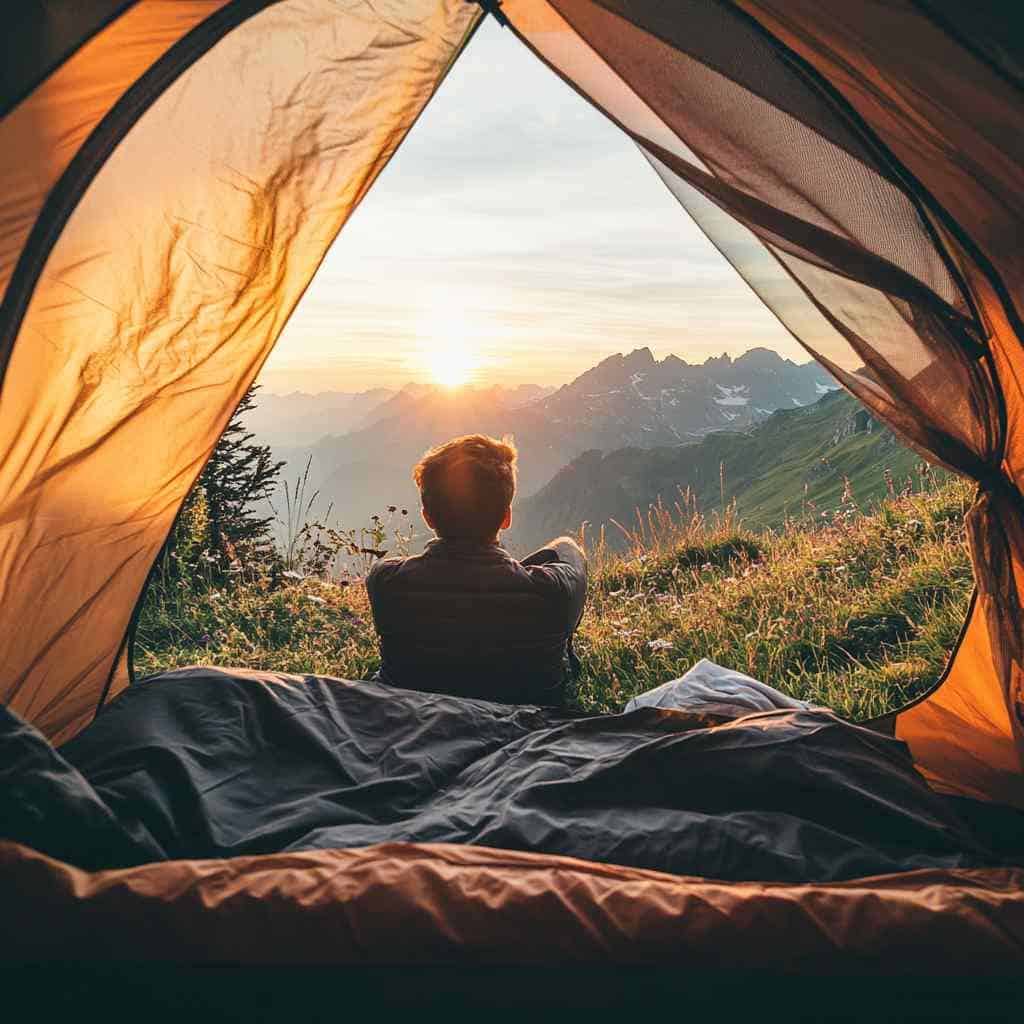
Alright, fellow camping enthusiasts, let’s talk about the fun stuff – tent features! These are the little details that can turn your tent from a mere shelter into a backcountry palace.
First up, let’s chat about tent doors.
Now, I know what you’re thinking. “It’s a hole with a zipper, how complicated can it be?” Oh, my sweet summer child. The number and placement of doors can make a huge difference.
Multiple doors mean less climbing over your tentmates for those midnight nature calls. And a side entry? Game-changer for easy access.
Next, let’s dive into tent interior storage solutions.
Pockets, gear lofts, and hanging loops are like the closet organisers of the camping world. They keep your gear off the floor and easy to find. Trust me, you’ll appreciate this when you’re fumbling for your headlamp in the middle of the night.
Now, let’s talk about ventilation.
Good tent ventilation systems are crucial for preventing condensation. Look for mesh panels and adjustable vents. Because waking up to a surprise indoor shower isn’t the refreshing start to the day you want.
Vestibules are another key feature. Think of them as the mudroom of your tent. They’re great for storing wet or muddy gear without bringing the mess inside.
I once had a vestibule big enough to cook in during a rainstorm. It was like having a little covered patio!
Some other nifty features to look out for:
- Lantern hooks: For creating that perfect ambiance (or for finding your socks).
- Reflective guy lines: To prevent late-night tripping incidents.
- Stargazing flysheet: For those perfect clear nights.
I remember my first “fancy” tent with all these features. It was like moving from a studio apartment to a penthouse suite. Suddenly, I had pockets for days, a vestibule big enough for my pack, and ventilation that meant I wasn’t drowning in condensation every morning.
Remember, features are great, but don’t get too caught up in the bells and whistles. Focus on what you’ll use. The best tent feature is the one that makes your camping experience better, not the one that looks cool in the store but never gets used.
So think about your camping style, prioritise the features that matter to you, and get ready for some seriously comfortable camping!
Smart Spending: Maximise Your Tent Budget
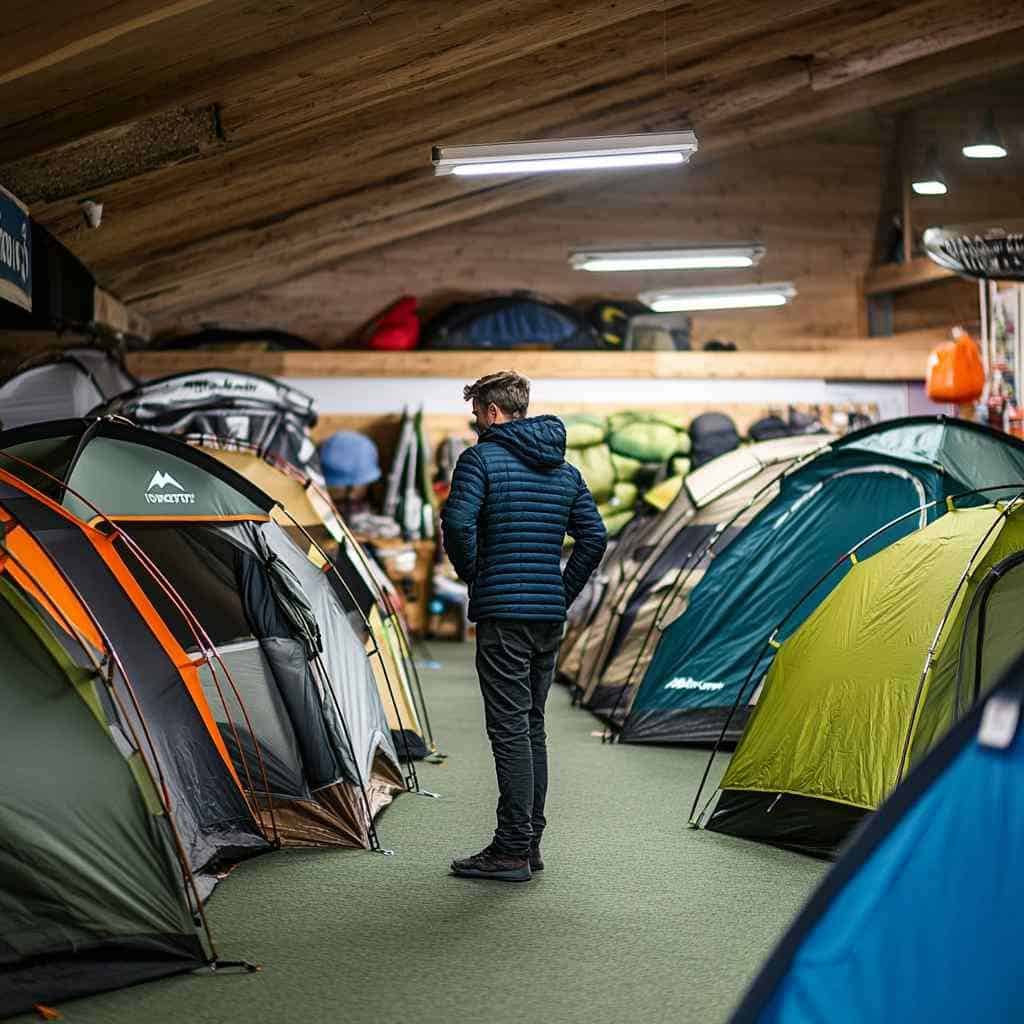
Alright, let’s talk about money, honey!
Choosing a tent is like dating – you’ve got to find the right balance between what you want and what you can afford. And just like in dating, sometimes you’ve got to kiss a few frogs before you find your prince (or princess) of a tent.
When it comes to budget-friendly camping tents, there’s a wide range out there.
You can find decent options anywhere from £50 to £500 and beyond. But remember, price doesn’t always equal quality. I’ve seen £100 tents outperform £300 ones in the right conditions.
Here’s my rule of thumb:
- Casual car campers: You can get away with a cheaper tent. Aim for the £100-£200 range.
- Regular weekend warriors: Look in the £200-£400 range for a good balance of quality and affordability.
- Serious backpackers or extreme weather campers: This is where you might want to splurge. £400+ can get you a tent that’ll last for years and keep you comfortable in tough conditions.
Now, when should you splurge?
If you’re camping in extreme conditions, investing in a high-quality 4-season tent is worth every penny. Trust me, when you’re weathering a storm at 12,000 feet, you’ll be glad you weren’t a cheapskate.
On the flip side, if you’re mostly car camping in good weather, you can probably get away with a more budget-friendly option. Just make sure it’s waterproof and has good ventilation.
Here’s a personal story: I once bought a super cheap tent for a music festival. It looked great…until it rained. Suddenly, I was sleeping in a puddle while my $30 tent turned into a sad, soggy mess. Lesson learned!
Some tips for finding good deals:
- Shop end-of-season sales. You can often find great tents at a fraction of the price.
- Look for last year’s models. They’re usually heavily discounted and often just as good as the new versions.
- Consider renting or borrowing first. It’s a great way to test out different types of tents before you commit. Just make sure you look after it, and don’t burn it down, like I did…
Remember, a tent is an investment in your outdoor adventures. It’s worth spending a bit more for quality and comfort.
But that doesn’t mean you need to break the bank. With a bit of research and some smart shopping, you can find a great tent that fits your needs and your budget.
So, whether you’re a bargain hunter or a luxury camper, there’s a perfect tent out there for you. Happy shopping, and even happier camping!
Your Perfect Tent Awaits!
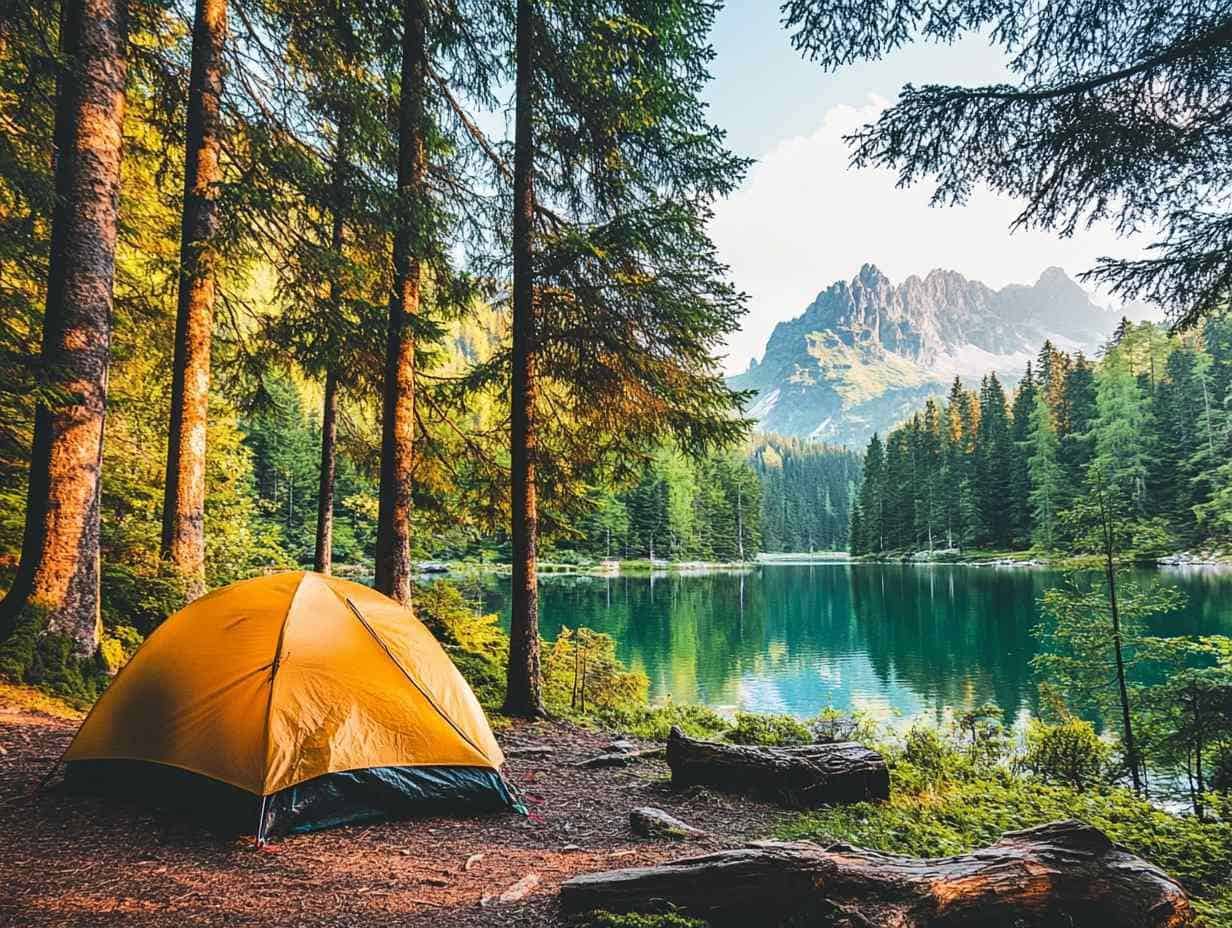
Whew! We’ve covered a lot of ground, haven’t we? From size and seasonality to weight and wacky features, choosing a tent is quite the adventure. But here’s the thing – there’s no one-size-fits-all perfect tent.
The best tent for you is the one that fits your camping style, your budget, and yes, your tolerance for midnight fox visits.
Remember, prioritise based on your needs.
If you’re a fair-weather car camper, you don’t need to shell out for a high-tech mountaineering tent. On the flip side, if you’re planning on winter camping in the Scottish Highlands, maybe don’t go for the £30 festival special (trust me on this one).
Here’s my final piece of advice: read reviews, but take them with a grain of salt. Everyone’s camping style is different.
And if possible, try to see the tents in person before you buy. Set them up, crawl inside; imagine yourself waking up to a beautiful sunrise (or a surprise downpour) in it.
Now, armed with all this knowledge, it’s time for you to find your perfect home away from home.
Remember, the best tent is the one that gets you out there, enjoying nature, making memories, and maybe even surviving the occasional bear encounter (from a safe distance, of course).
So what are you waiting for? Your perfect tent is out there, just waiting to be pitched under the stars. Happy camping, and may your tent always keep you dry, comfy, and hopefully bear-free!
Tent Trivia: Mind-Blowing Facts That’ll Make You a Campsite Genius
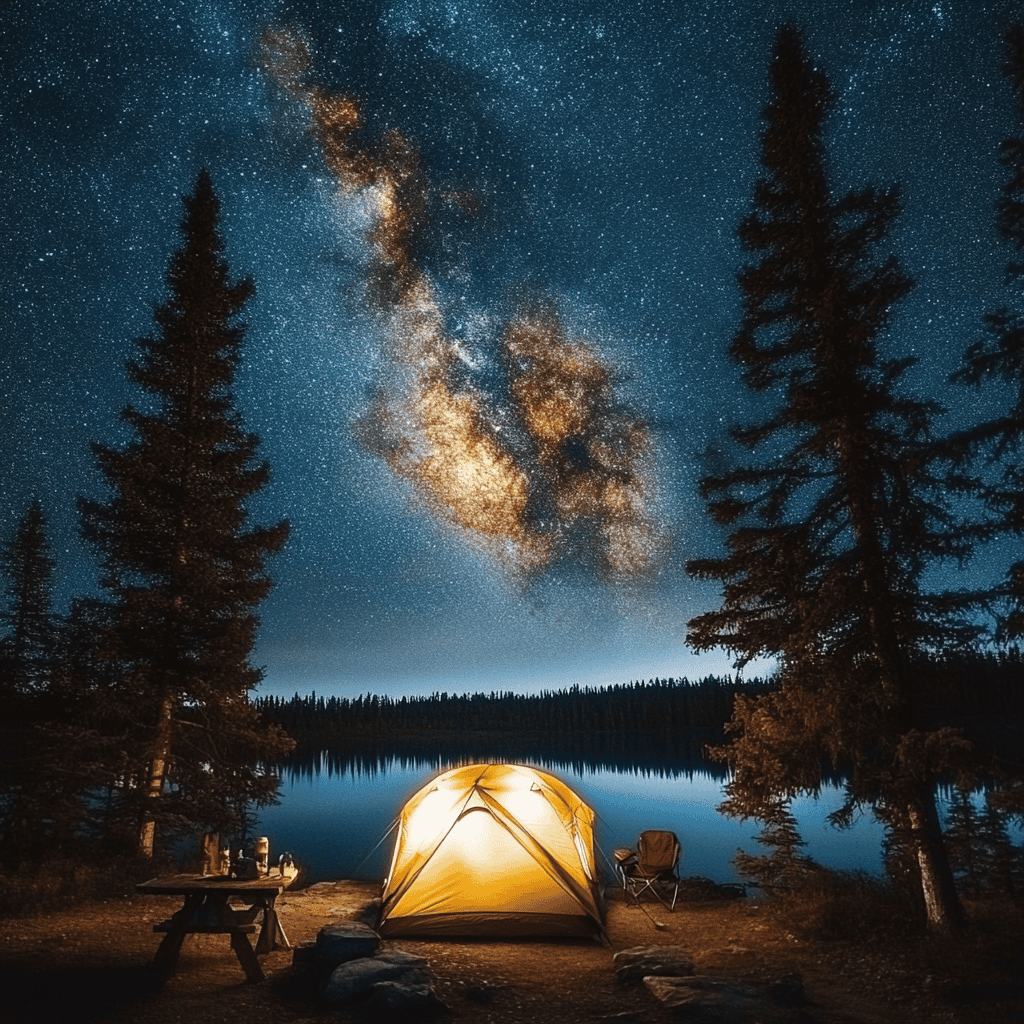
- The average camping tent weighs about 5–7 pounds (2.2 – 2.7kg), making it easy to carry on hiking trips.
- The most common tent size is a 2-person tent, followed by 4-person and 6-person tents.
- Dome tents are the most popular shape, accounting for over 60% of tent sales.
- 40% of tent buyers consider the tent’s weight as one of the top factors in their purchasing decision.
- The average lifespan of a camping tent is 5–7 years, depending on usage and care.
- Around 30% of campers prefer tents with multiple entry points for easy access.
- According to a survey, 35% of campers consider weather resistance as the most important feature in a tent.
- The most expensive camping tent sold was a custom-made tent for $75,000, designed for extreme conditions.
- On average, campers spend around £200–300 on a new tent, but prices can range from £50 to £1,000+.
- In the US, the most popular camping destinations are national parks, with over 307 million visitors in 2015.
- In 2018, the revenue of the camping and tent manufacturing industry in the US was over $1.8 billion.
- 63% of camping tent buyers prefer tents made from waterproof materials such as nylon or polyester.
- The first modern camping tent was invented in 18971 by Thomas Hiram Holding, a British army officer.
- 74% of campers prefer tents with built-in flooring for added comfort and protection.
- The largest tent camping event in the world is the Burning Man festival, with over 80,000 participants each year.
- Around 77% of campers consider durability as an important factor when choosing a camping tent.
- The most popular material for tent poles is aluminium, as it is lightweight and durable.
- According to a study, 52% of campers said their camping trips improved their mental and emotional well-being.
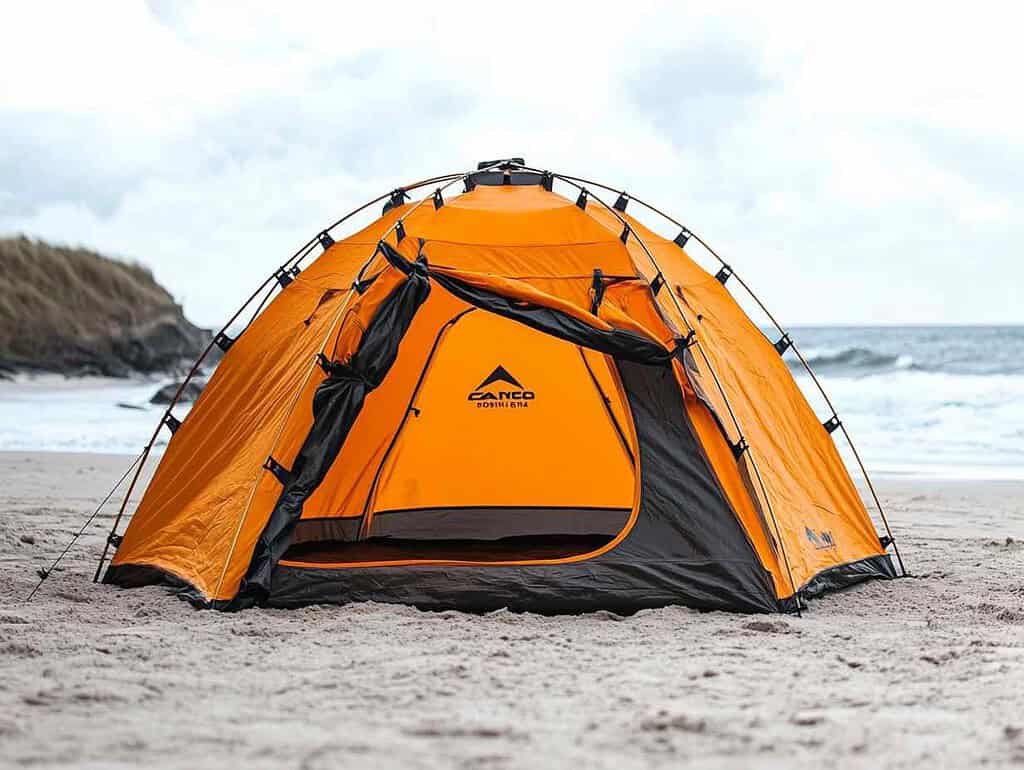
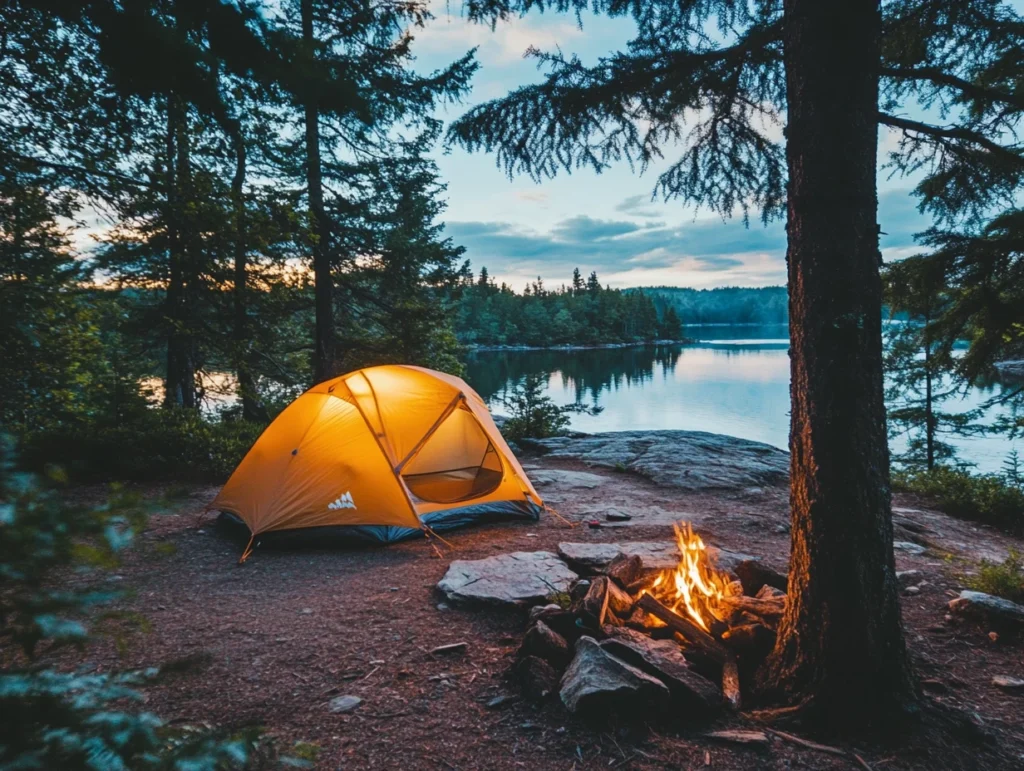
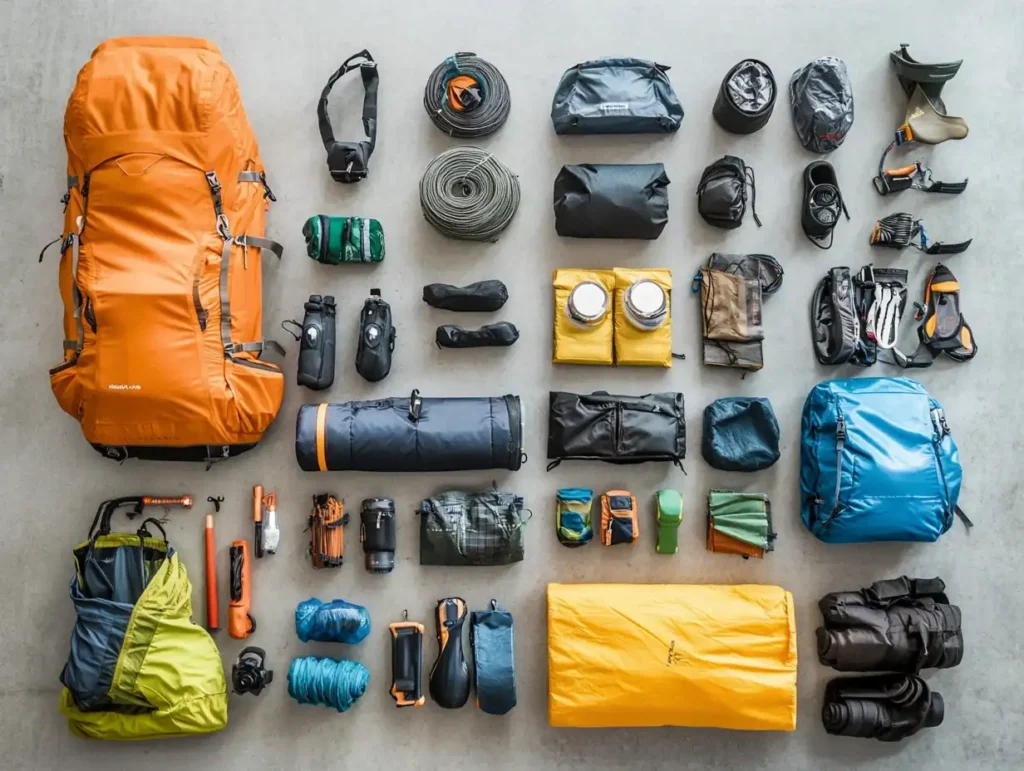
Pingback: The Ultimate Camping Gear Checklist for 2024 | WBHawkins
Pingback: Jetboil Mini Mo: Safe, Simple & Superb [2024 Review]
Pingback: 15 Essential Winter Camping Tips | WBHawkins.com